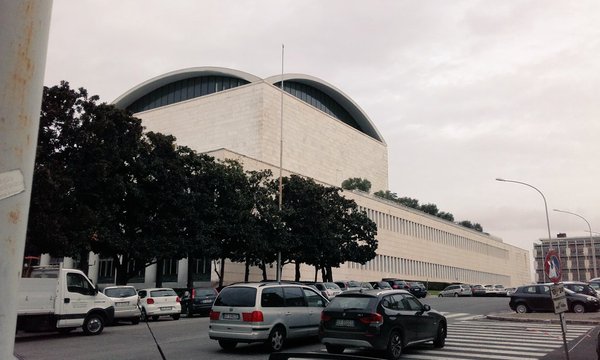EUR:Mussolini's Monuments
On 7 June BBC4 aired my hero Jonathan Meades' latest offering Ben Building: Mussolini, Monuments and Modernism. I began my year with a visit to Rome. Meades' fantastic exploration of Rome under the charismatic Benito and what his brand of fascism was reminded me of that day in January walking around this district of the city. I seemed to be the only tourist walking around this monumental business zone. Sadly all the parked cars do take away from the photos. This area, south of the city, was originally chosen in the 1930s as the site for the 1942 world's fair which Mussolini planned to open to celebrated twenty years of Fascism. It was envisioned that the city would expand towards the south-west towards the sea and be a new city centre for Rome. The planned exhibition never took place due to World War II.
This area, south of the city, was originally chosen in the 1930s as the site for the 1942 world's fair which Mussolini planned to open to celebrated twenty years of Fascism. It was envisioned that the city would expand towards the south-west towards the sea and be a new city centre for Rome. The planned exhibition never took place due to World War II. This year marks 80 years since the creation if the autonomous agency responsible for the organization and construction of the project, E42 on 26 December 1936, the name later changed to EUR. The architects and urban theorists chosen for this master plan were; Marcello Piacentini, Giuseppe Pagano Pogatschnig, Luigi Piccinato, Luigi Vietti, and Ettore Rossi, employing concrete to replicate the gravitas of ancient Roman structures. During the war the uncompleted EUR development suffered severe damage. However, the Roman authorities decided that EUR could be the basis of an out-of-town business district. The next two decades saw the completion of the unfinished Fascist-era buildings and other new buildings built in contemporary styles for use as offices and government buildings.
Palazzo dei Congressi constructed in 1942 for the Universal Exposition
Marconi's Obelisk (1959) 45 metre high concrete structure covered in marble.
Pigorini National Museum of Prehistory & Ethnography
Museo della Civiltà Romana with 59 sections illustrating Roman civilization 1939-41
The centrepiece for Mussolini's new Roman Empire - the 'Square Colisseum' with twenty-eight marble statues. Fendi have recently bought and restored the building for their HQ with a permanent exhibition space on the ground floor.
Interestingly these buildings and muscled male statues, both monuments of political strength were almost fully completed for the 1960 Summer Olympics in Rome, again a celebration of strength and beating ones competitors.
It is naturally hard to separate the fact that these buildings were built for a fascist regime but there is something a little sad about them. They never got the chance to bask in Il Duce's vainglory. Today we focus on the activities inside our outlet stores, and convention centres and no longer fill our cities with buildings that evoke child-like awe. These buildings sing out their operatic overtures, at the top of their lungs, the grand ambition of their designers and patrons and not the mute, banal ones that we increasingly see more of today.















No comments:
Post a Comment